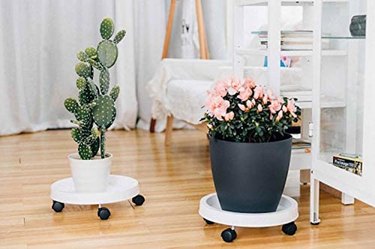One of the quickest and most cost-effective ways to upgrade any living space is with plants. They're relatively inexpensive, they can be reproduced with minimal effort, and filling your rooms with green and growing things can utterly change their look and feel. Unfortunately space is at a premium in most homes, and more so for spaces with enough light to grow plants effectively. To take full advantage of the spots you do have available, make use of space-efficient planters like these five favorites.
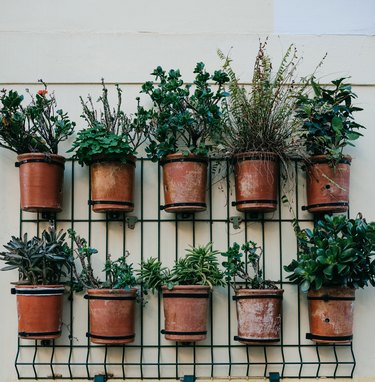
Video of the Day
1) Stacking Multi-Tier Planters
If you want a concentrated blast of greenery without hanging things from your walls or ceilings, one effective option is a stacking planter like the "Mr. Stacky." Each of its five tiers gives you four separate planters, for a total of 20 plants. You might put one near your kitchen, for example, and fill it with lettuces, herbs or even tomato plants. You might also choose to load it with attractive "fill it and spill it" flowers, like creeping phlox, in a variety of colors. For extra versatility, set the planter on a wheeled caddy so it can be moved from spot to spot as the seasons progress.
Video of the Day
Our Picks:
2) Hanging Garden Wall Planters
In some especially problematic rooms, you might not be willing to give up any floor space at all to planters or the furniture to position them on. One way to work around that and still have a lot of greenery is with wall-hanging soft planters. These hang from a sturdy hook or two on your wall, and have multiple pockets - like a hanging shoe holder - that you can fill with soil and plants. Fill them with salad greens or herbs for your kitchen, or with low-maintenance blossoms or spilling, hanging plants for a lush and green appearance. You can find them in vertical or horizontal versions, or even in large squares and rectangles that become a piece of living wall art once filled.
Our Picks:
Read Next: Varieties of Gypsophila
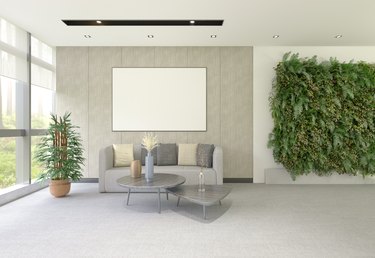
3) Decorative Wall-Mount Planters
Soft-pocket wall hanging planters are functional, but not stylish: They rely entirely on the plants themselves to enhance your decor. If you're willing to trade sheer volume of greenery for something better suited to your decor, you'll have lots of options. This type of planter mounts flat to the wall, like a sconce light fixture, and comes in a style to suit any room. A few minutes' searching should show you any visual style you can imagine, from angular and Art Deco-ish to faux stone basins, galvanized "farmhouse" style or even bright, colorful and whimsical options. As with any small planter, your best bets here are ivies, succulents, air plants, compact trailing flowers, herbs, and other plants that don't require a lot of soil.
Our Picks:
Read Next: How to Grow Succulents in Moss
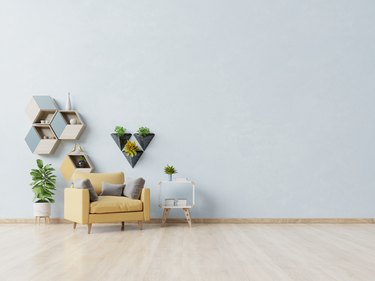
4) Tension-Rod Plant Poles
Rental units can be especially challenging for would-be gardeners. Not only can't you (usually) make permanent changes, some landlords won't even permit holes in the walls or ceilings for your planters. In those scenarios, a tension rod plant stand can be a lifesaver. They're very similar to the caddies you sometimes see in showers, with a vertical pole extending from floor to ceiling. The pole comes with moveable stands for plants in pots, as well as a long hook for hanging plants, and it can go anywhere you need it to. There are even double-pole versions, for more flexibility. The stands accommodate any plant that'll fit into a pot with a 6-inch base, and the hanging plant can be about as big as you wish.
Read Next: List of Small Creeping Plants

5) Multi-Tier Planter Stands
The ultimate answer to packing a lot of plants into a tight space is a multi-tier plant stand. These give you the option (depending on the stand you choose) of having relatively large pots and therefore bigger plants, compared to many of the space-conscious options we've already discussed. Some are designed to lean against a wall and others to fit into corners, but most are freestanding and can be used along a well, or a large picture window, or even used as a room divider to define your spaces. If you go the room divider route, you can double down by suspending a pole from the ceiling and using it for a row of lush hanging plants above the stand itself.
Read Next: How to Make a Vertical Clay Pot Garden
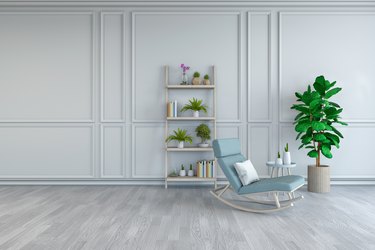
This is just the tip of a very large iceberg - there are literally thousands of options out there - so you'll need to choose wisely. If space or light is the main constraint, start by picking a planter or plant stand design that works for your spot, then choose plants that work with your planter. If you have some flexibility or floor space to work with, or existing plants to accommodate, decide on your plants first and then pick a stand or planter that suits them. Either way, your living space will be better (and greener!) as a result.
